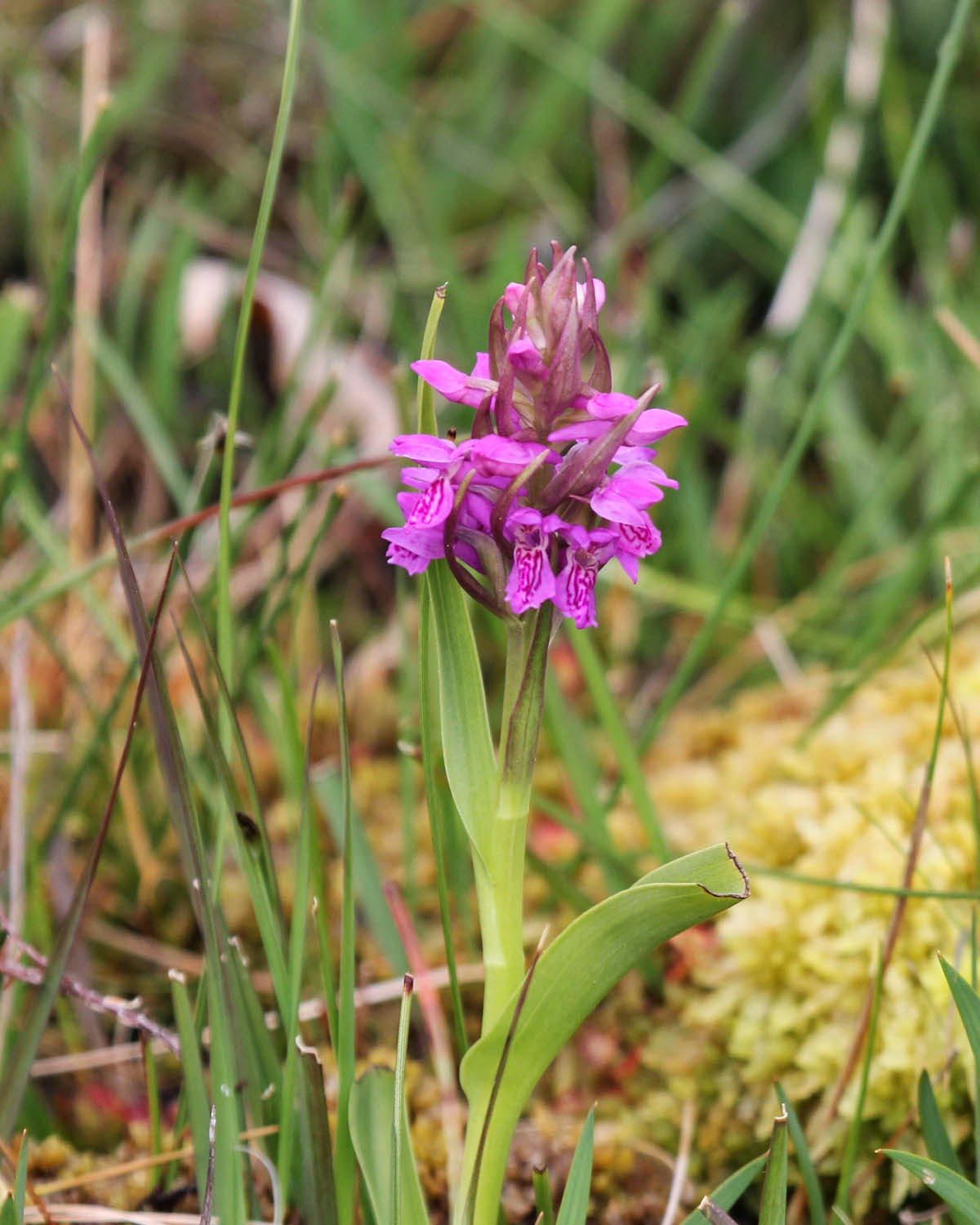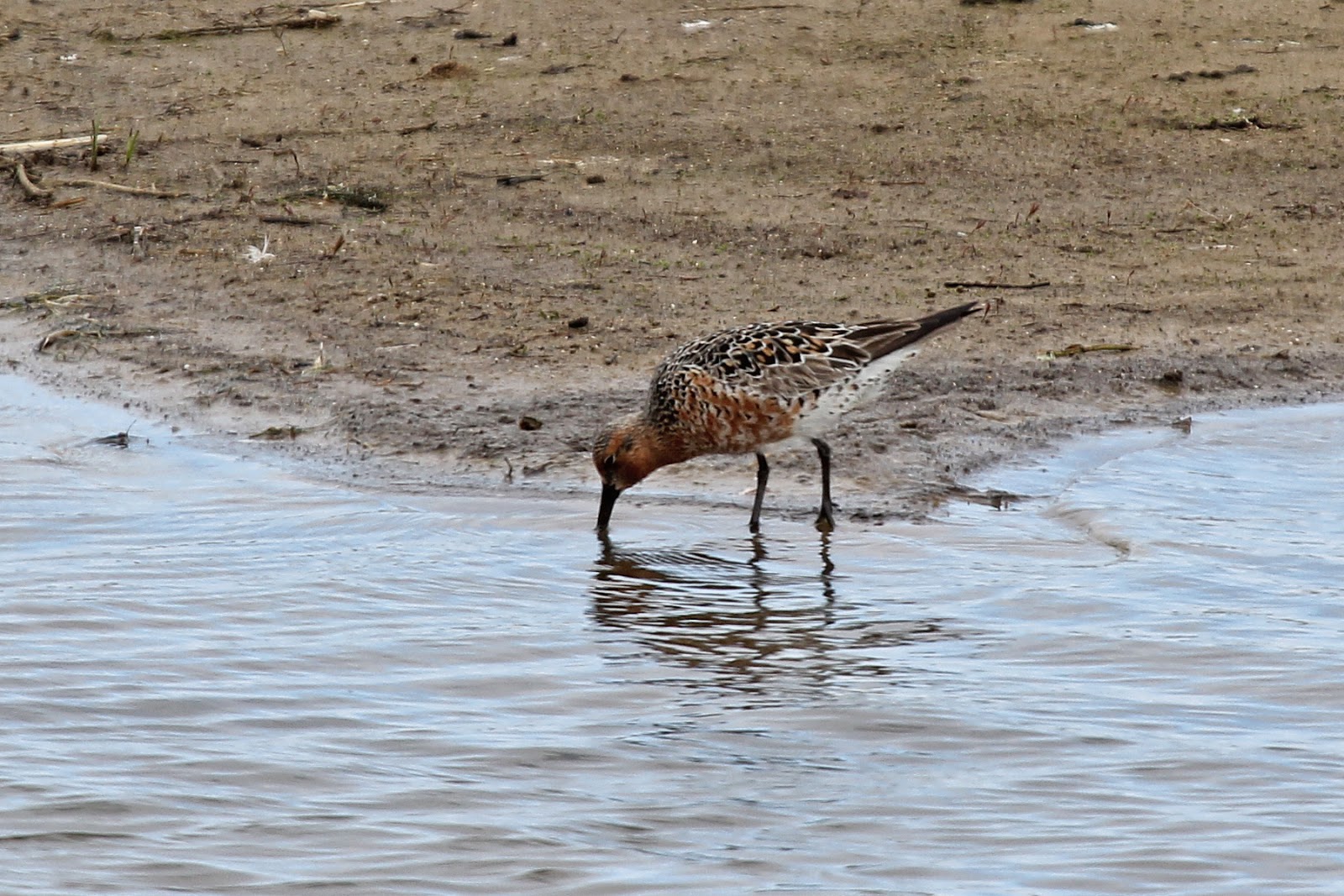We walked around the copses and bracken, with Willow Warblers singing in the trees and Lapwing calling as they performed their acrobatics in the open patches.
After walking through one small copse we came across a group of Fallow Deer feeding by a bush. As ever they heard us very quickly.
Walking back over the hill to the footpath, we disturbed a brown bird from the ground. It was carrying food. It perched up on a small tree and allowed me to get quite close. From the patch on the wing, and the short tail, I believe this to be a Woodlark.
A Cuckoo had been calling earlier, and as we walked back another broke into song. We set off to find the source, but as we got closer it stopped, and it became clear that it had flown off when we heard it away off in the distance.
We did though come across a family group of Wrens, and this youngster sat on a branch "dipping" while waiting for the adult to feed it.
As we tried to get closer it flew off, so we walked back through the bog to the higher ground. As we did we came across cotton grass, and this Marsh Orchid
There were also quite a few of these Round-leaved Sundews, beautiful little plants
The blue sky was now moving across and the sun had started to come out. We thought this might bring out the butterflies, but we didn't see one all day. The only insect resembling a butterfly was this Common Heath Moth. We saw several in amongst the heather.
We made our way up to the viewpoint, where there was already someone watching. He must have regularly watched the area because he was extremely knowledgeable, and was very helpful in identifying very distant views, and we quickly became able to pick out the Common Buzzards from the possible Honeys, and the Goshawks.
The Goshawks were quite spectacular. There 26 pairs nesting in the Forest, and we watched a s female chased others away from there territory. They have young hatched now, and the task is all about finding food. The male does most of the work, and we probably saw one male.
This is a very distant shot of a female Goshawk. Believe me when you watch them you quickly realise they could not be anything else.
We watched one bird go through a display flight, raising the wings high with deep wing beats, and then flying through a series of switchbacks.
We never managed to see Honey Buzzard, apparently they are probably now nest building or brooding. The best time for them is when they are feeding young, like the Goshawks now, in July and August, so a return will be necessary.
We decided to take a walk into the woods leaving the view point behind us. Almost immediately we came across a male Redstart on the path in front of us, and then a pair when we stopped to watch a singing Firecrest. Some really spectacular birds in the same place!
A singing Wood Warbler completed the birds we were looking for, but it stayed well in amongst the leaves and it was not possible to photograph.
The path took us down to Highland water, and we walked by the side of the stream. I hoped for Grey Wagtail, and then found one, then mentioned the possibility of Kingfisher when I heard a similar call, and before we knew it one had zipped away from us. Despite a search along the stream we could relocate it. The stream though and the iron brown water was lovely.
We walked back, hopeful to find a butterfly, but there was nothing.
Just before the car park we came across a family party of Coal Tits, it seems this was the theme for the day.
It had been a great day, the weather had played ball to, the afternoon being quite warm in the sunshine. I always seem to forget how close the New Forest is to us, it is a wonderful place (when the weather is good).




























































































